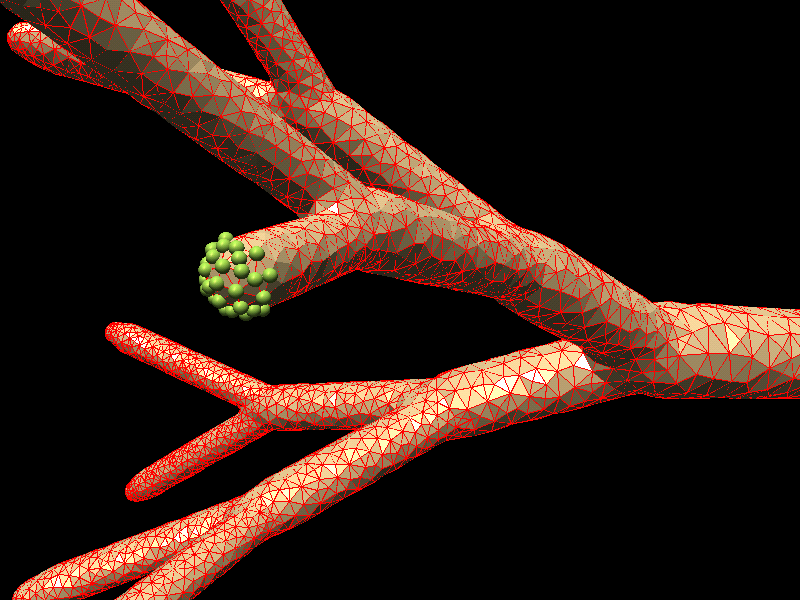TAM is a 3D mesh generator, which realizes a patented technique, based on a concept of tool-assisted mesh generation, when a shaping tool is used to create the mesh, and a combination of edge-wise cell splitting and elliptic smoothing procedures ensure its uniformity.
In its current implementation the method uses another patented algorithm based on the tissue-growth model. A characteristic feature of this model is that the outer boundary of the mesh being created is always smooth, and therefore, can be easily conformed to the specified domain boundaries.
The picture below shows the outer boundary of a 3D mesh of bifurcating tubes representing a generic biological structure. The internal nodes of the mesh are not shown for clariy.

 In contrast to the conventional mesh generation methods
where a 3D mesh is generated by first specifying a 2D surface
and then propagating the mesh front, in the current technique
the mesh is constructed, starting from a one-dimensional
skeleton or a frame and moving the shaping tool along the
prescribed 1D lines (a manual tool control is also possible).
This enables a simpler mesh generation and provides for higher
mesh uniformity.
In contrast to the conventional mesh generation methods
where a 3D mesh is generated by first specifying a 2D surface
and then propagating the mesh front, in the current technique
the mesh is constructed, starting from a one-dimensional
skeleton or a frame and moving the shaping tool along the
prescribed 1D lines (a manual tool control is also possible).
This enables a simpler mesh generation and provides for higher
mesh uniformity.
The method has a potential in biomedical applications, for handling flexible tissues, and in the problems of fluid-structure interaction. The problems with moving boundaries (piston-cylinder assembly) is another potential area of application.
This study was performed at West Virginia University, sponsored by College of Engineering and Miniral resources"
author={Smirnov, A.V.},
title={Tool assisted mesh generation based on a tissue-growth model},
journal={Medical and Biological Engineering and Computing},
volume=41,
number=4,
year=2003,
pages={494-497}